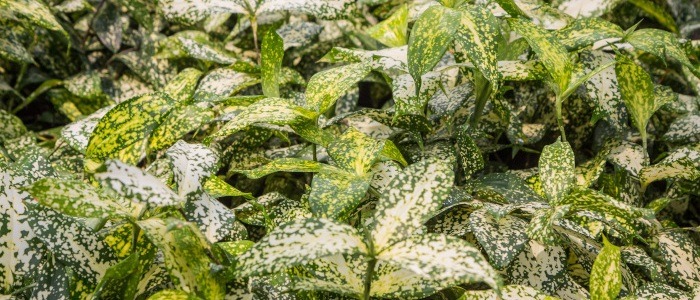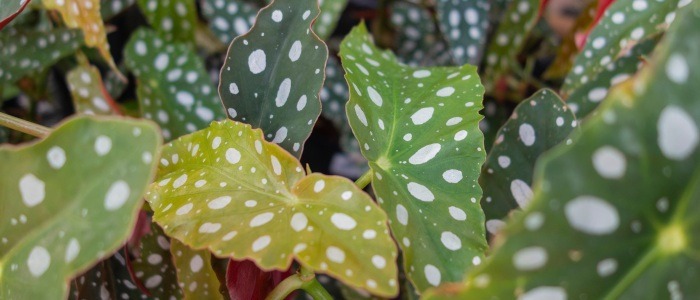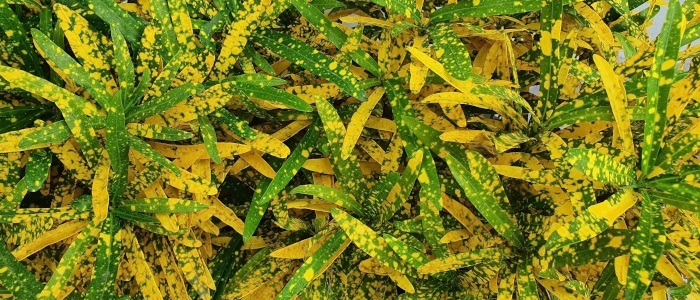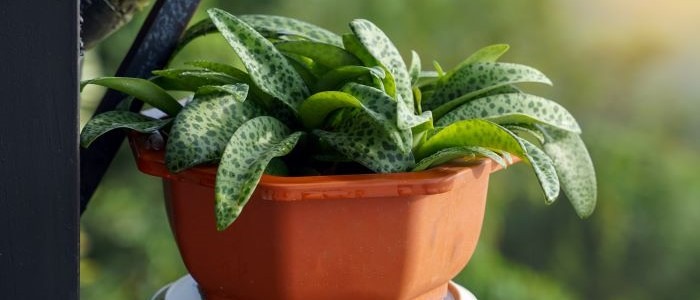The Rattlesnake Plant (Goeppertia insignis) is a tropical perennial native to Central and South America that can add texture and beauty to any space. With its long, lance-shaped leaves with dark green stripes and red or purple undersides, it’s an eye-catching addition to any garden or home. This easy-to-grow houseplant can reach heights of up to three feet and produces small white flowers in the summer months.
But, in order for your Rattlesnake Plant to thrive and stay healthy, it’s important to provide the right environment for it. To ensure its growth, this plant needs bright indirect sunlight and a moist environment. If you’re able to provide these conditions, your plant will be sure to grow strong and look great!
However, there are some other things you can do to ensure your Rattlesnake Plant stays healthy too. As well as providing the right environment for your plant, make sure you keep its soil moist but not soggy; water when the top inch of soil has dried out but not before then. And don’t forget about fertilizer – use a balanced fertilizer every two weeks during its active growing season (spring through fall).
It’s also important that you prune your Rattlesnake Plant regularly. You should remove dead or dying leaves as soon as you see them – not only does this help keep your plant healthy but it also keeps it looking neat too! Finally, if possible try misting your plant every few days – this helps increase humidity around the plant which is essential for its growth and health.
By following these tips on how to care for your Rattlesnake Plant, you will be sure to have a beautiful houseplant that will bring texture and beauty into any space!
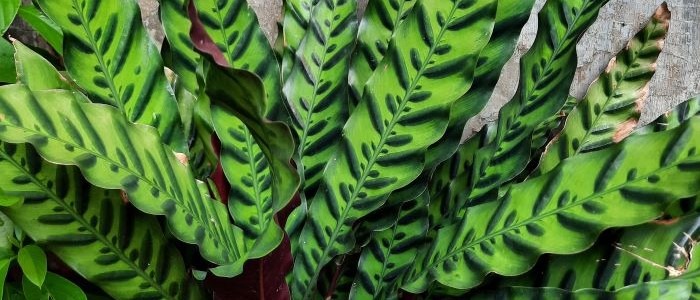
Rattlesnake Plant Frequently Asked Questions
What is another name for a rattlesnake plant?
Another name for a rattlesnake plant is Calathea lancifolia. This tropical plant is also commonly known as the prayer plant due to its unique leaf movement, which folds up during the night as if in prayer. The rattlesnake plant gets its name from the pattern on its leaves, which resembles the skin of a rattlesnake, with dark green stripes and a deep purple underside.
What are the water requirements for the rattlesnake plant?
The rattlesnake plant, also known as Calathea lancifolia, prefers to be kept consistently moist but not soggy. It thrives in well-draining soil that allows excess water to escape. It is important to water the plant thoroughly, making sure the top inch of soil is moist, and then allow the soil to dry out slightly before watering again. Overwatering can lead to root rot, while underwatering can cause the leaves to wilt and lose their vibrant colors.
Choosing the Right Rattlesnake Plant for Your Garden
When choosing the right Rattlesnake Plant for your garden, it is important to consider the size of your garden and the climate and temperature in your area. Different varieties of the Rattlesnake Plant may require different soil types, so it is important to research what type of soil you have in your area. Also, look for Rattlesnake Plants with healthy foliage and stems.
This will ensure that you get a plant that is strong and can easily adapt to its new environment. Lastly, be aware that purchasing a Rattlesnake Plant online might not be easy since they are difficult to find from online retailers. It is best to purchase them from a local nursery where they can provide expert advice when selecting the right plant for your garden.
When selecting the right variety for your space, make sure that you select one that is compatible with the climate in your area. For example, if you live in an area with hot summers and cold winters, then it’s best to choose a variety such as Goeppertia insignis ‘Crimson Jewel’ which has been bred specifically for these conditions. Additionally, make sure to check how large each variety grows so that it fits comfortably within its designated space in your garden.
In addition to researching suitable varieties for your region, it is also important to find out what kind of soil conditions are best suited for growing this plant species. Generally speaking, the Rattlesnake Plant prefers well-draining soils which are slightly acidic (pH 6–6.5). The roots should also be kept moist but not waterlogged at all times; otherwise, they may suffer from root rot or stem dieback caused by fungal diseases such as Phytophthora parasitica or Pythium spp.. Make sure to fertilize regularly during its active growing season (spring through fall) with a balanced fertilizer such as 10-10-10 or 8-8-8 at half strength every two weeks.
By following these steps when looking for and caring for a Rattlesnake Plant (Goeppertia insignis), you can create an ideal environment where this plant can thrive and bring beauty and texture into any space!
Creating the Ideal Environment for Planting the Rattlesnake Plant
Creating the Ideal Environment for Planting the Rattlesnake Plant When planting and caring for your Rattlesnake Plant, it is important to create an environment that is conducive to its growth. The key to success in this process is finding a spot in your garden with good drainage and adequate sunlight. Additionally, prepare the soil with organic compost before planting your Rattlesnake Plant as this will ensure optimal growth conditions.
Temperature is also an important factor when caring for your Rattlesnake Plant and its ideal temperature range should not drop below 50°F (10°C). Additionally, try to protect the plant from strong winds and harsh humidity as this can damage the foliage of your plant. Finally, keep the soil moist but not overly wet as too much moisture can be detrimental to its health.
By following these simple steps you can create an environment that is just right for your Rattlesnake Plant so that it can thrive and grow in its new home. With proper care, this easy-to-grow houseplant will make a beautiful addition to any space with its unique texture and beauty!
Transplanting and Watering Requirements for the Rattlesnake Plant
Transplanting and Watering Requirements for the Rattlesnake Plant is a critical step in ensuring that your plant will thrive. When transplanting, it is important to use well-draining soil to avoid overwatering and root rot. A mixture of soil, organic compost, and perlite will help with drainage and aeration. Additionally, when transplanting wait until the soil has dried out before watering again.
When it comes to watering, make sure to water when the top inch of soil has dried out. Water deeply but not too often; this plant prefers moist but not soggy soil. To avoid overwatering, you can use a pot with good drainage holes or a raised bed. It’s also important to mist your rattlesnake plant every few days during its active growing season in order to increase humidity levels around the plant.
The Rattlesnake Plant should be kept in a warm sunny spot until it becomes established; however, make sure that direct sunlight does not hit the leaves as this can cause damage or burns on its delicate foliage. If you live in an area with cold winters, you may need to move your Rattlesnake Plant indoors during those months as they do not tolerate low temperatures well. Remember that the temperature should remain between 50°F (10°C) or higher for optimal growth of your rattlesnake plant.
By following these tips on transplanting and watering requirements for the Rattlesnake Plant, you can ensure that your plant will be healthy and strong for years to come!
Caring for a Rattlesnake Plant in its New Home
To ensure that your Rattlesnake Plant thrives, it is important to provide the appropriate environment. Regular light exposure is essential, to give the plant a minimum of 4-6 hours of bright, indirect sunlight per day. Too much direct sun can cause leaves to burn and damage the plant.
Watering should be done moderately, allowing the soil to dry out between waterings and avoiding over-watering which can rot roots. Additionally, fertilize with a balanced fertilizer on a monthly basis during growing season but be careful not to use too much fertilizer as this will harm the root system.
Proper pruning is also key in caring for your Rattlesnake Plant; remove any dead or damaged leaves regularly in order to maintain a healthy looking plant. It’s also critical to keep an eye out for pests such as mealybugs or spider mites which feed off sap from stems and leaves causing them to yellow or brown in color – if you spot any insects on your plant you should act quickly using an insecticidal soap or neem oil solution in order to prevent damage before it’s too late.
With regular care and attention, novice gardeners can enjoy having beautiful Rattlesnake Plants in their home or garden! By providing adequate light, water, nutrients, humidity levels and controlling pests you are sure to have great success with your new leafy friend!
Common Problems That Affect the Rattlesnake Plant
One common problem with the rattlesnake plant is overwatering. This plant is native to tropical regions and prefers moist but well-draining soil. Overwatering can lead to root rot and other fungal diseases. Another issue that may arise is a lack of humidity. Rattlesnake plants thrive in humid environments, so if the air is too dry, the leaves may become brown and crispy.
Additionally, these plants are susceptible to pests such as aphids and spider mites, which can cause damage if not addressed promptly and effectively. Regularly inspecting the leaves and stems for any signs of infestation and promptly treating them with appropriate insecticides or natural remedies can prevent further damage.
Conclusion
The Rattlesnake Plant (Goeppertia insignis) is an interesting and unique addition to any home or garden. With its distinctive foliage and bright colors, it can provide a pop of color to any space. In order to ensure the health and longevity of your plant, it is important to understand the environment it needs in order to thrive.
Consider the amount of light and space when choosing a spot for your Rattlesnake Plant, as well as the type of soil you have available in your area. Moderate watering and fertilization every two weeks during the active growing season are essential for its growth. Additionally, be sure to be aware of pests like spider mites, aphids, and mealybugs that may affect your Rattlesnake plant. Propagating is also an option; stem or leaf cuttings are an easy way to do this.
With patience and dedication, you can easily grow a healthy Rattlesnake Plant in your own home or garden. The key is providing them with an environment that meets their needs in terms of light, water, nutrition, humidity levels, temperature range, wind protection from strong winds if outdoors, and pest control if necessary.
If given proper care and attention they will reward you with beautiful foliage that adds texture and color to any space. With the right environment and care this easy-to-grow houseplant will thrive and bring beauty into any space!
